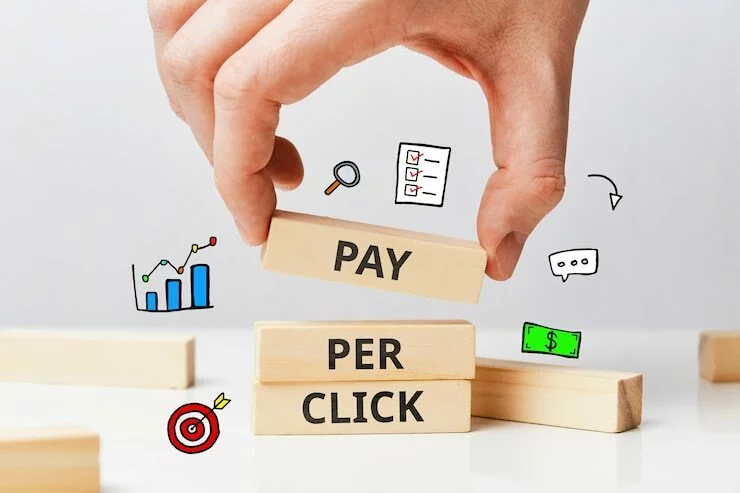Who doesn’t like free stuff? As it turns out, it’s fairly straightforward to get thousands of unique hits daily to your website if you do certain things right. It’s not an easy thing, neither is it fast. If you’re willing to spend the time and do the hard work, you can reap benefits within a few quick months. We’ll be leveraging the power of content through blogging for this. This article will serve as your guide to getting good traffic that converts from Google for free. But first, you need to brush up on your knowledge regarding SEO.
A brief primer on search engine optimization (SEO)
SEO is a group of techniques that help improve the visibility of your pages on Google search pages (and other search engine pages). There’s always plenty of traffic to route to various websites – you just need to be authoritative enough for Google to consider your pages for part of this traffic. And that takes time. SEO techniques include great content writing, building backlinks, meta tags, alt descriptions, social signals, clean website designs, providing valuable content to the audience, speeding up your page load times, and so on.
Doing SEO the right way enables your website’s pages to rank higher. But why is this important? People searching for “buy used cars” have a high purchase intent. Also, most searchers don’t have to click on the second or third page of search results because Google’s search algorithm is so great that it can deliver the right pages within the first 10 results. If you wish to rank for this keyword and get a piece of this traffic then SEO is your best friend.
What is blogging?
Blogging is a key part of SEO. Although blogs serve other purposes as well. For example, an organization’s blog is intended to serve information to the employees rather than improve the website’s ranking. Nevertheless, blogs are one of the best ways to maximize your visibility organically. The internet is built around content. Even with the advent of all forms of media and the widespread popularity of images, videos, GIFs, and everything in between – textual content is still used as the primary factor for judging a website’s ranking in search engine result pages (SERPs).
Blogs are the best way to utilize this power. Blogs should be around key topics (keywords – more on them later). If you post random, unrelated blog posts that don’t concentrate on a single, broader topic then this won’t help your website’s SEO.
How does blogging help (in SEO)?
Blogs are essentially content. Google prizes websites that author valuable content for its users. If you can solve problems, answer questions, help others, or guide searchers then your content will be considered valuable. The other extreme of this (also the quickest way to get penalized) is writing spammy content, cloaking ads as normal text, overloading your pages with ads, or simply talking about the wrong things. Blogging helps your website get traction online. With consistency, research, and hard work you can steadily increase your traffic over time.
Doing blogging the right way
Two things: Keyword research and competitor analysis.
Keywords are the words or phrases you wish to rank for. Ranking for specific keywords is easier than ranking for broader topics. For example, ranking for photography or cameras is very difficult. But if you narrow your niche down – photography < cameras < camera lenses < Nikon camera lenses < Nikon DSLR camera lenses – you can reap the rewards quicker. Form your blog posts around the “cornerstone” – the primary keyword. And sprinkle related keywords, synonyms, proofs, long-tail keywords, etc. throughout the piece.
Competitor analysis allows you to see the topics your competitors are ranking for. It’s not a crime to cover the same topics, as long as you can offer a fresh perspective or improve on the existing literature on the topic. Both keyword research and competitor analysis are prerequisites to good blogging and ultimately better SEO.
Other tips for blogging
- Be social: Link to other sources.
- Natural link building: Post your links that solve a problem on forums, social platforms, etc. to gather backlinks.
- Images and their alt tags: Include images in your blog posts and make sure you append alt tags to them.
- Use basic SEO in blog posts: Get a hang of writing catchy meta titles and meta descriptions.
- Don’t spam keywords: Keyword stuffing is just bad. It makes the content unreadable and Google picks it up quickly. 1-3% is the ideal keyword density. It means that if you’re writing a 1000-word blog post, only use your keyword and its proofs 10-30 times uniformly.
- Keep the formatting neat: Avoid incoherent, in-your-face, or wildly different formatting (font sizes, font colors, bad alignments, etc.).
Now let’s move on to a more serious topic. Webmasters and website publishers have historically tried to cheat the system. Sometimes the gains were good, but always momentary. Google’s algorithm is an ever-growing organism and Google pushes updates and patches to it very regularly. If you’re serious about blogging here’s what you should know.
The first rule: Content on a website, in general, should not be plagiarized. Original content is the only content that works. Also, avoid thin, low-effort, and spun content at all costs.
- Thin content is content that’s not long enough to be considered a valid solution to any problem or a valid answer to a search query. Ideally, you should keep your blog posts above 300 words.
- Low-effort content is content written without a true purpose, just to inflate the word count on a website. Although technically difficult to tell apart, low-effort and low-quality content can still be flagged by Google in many cases. An important thing to keep in mind is that content with repetitiveness can be flagged as unnecessary and low-effort.
- Spun content means content written by simply rewording another article. As plagiarism is a big no-no, many article writers spin content instead – they find an article that already solves the user’s query and reword it. If you reword every third word, Google cannot catch it as plagiarism. However, spinning is risky and sooner or later, you will be called out.
Google penalizes content that doesn’t follow best practices. If you’re a culprit of any bad practices like the ones listed above, you can be permanently shadow-banned from Google SERPs and your traffic will drop to zero in a matter of weeks.
Check these official resources to make sure you adhere to the content standards while you blog.
- Overview of SEO guidelines | Google Developers
- Webmaster guidelines | Advanced SEO | Google Search Central
- Avoid creating duplicate content | Google Search Central
Of Course if you need help you can always check out our SEO services here at Faceless Digital!







